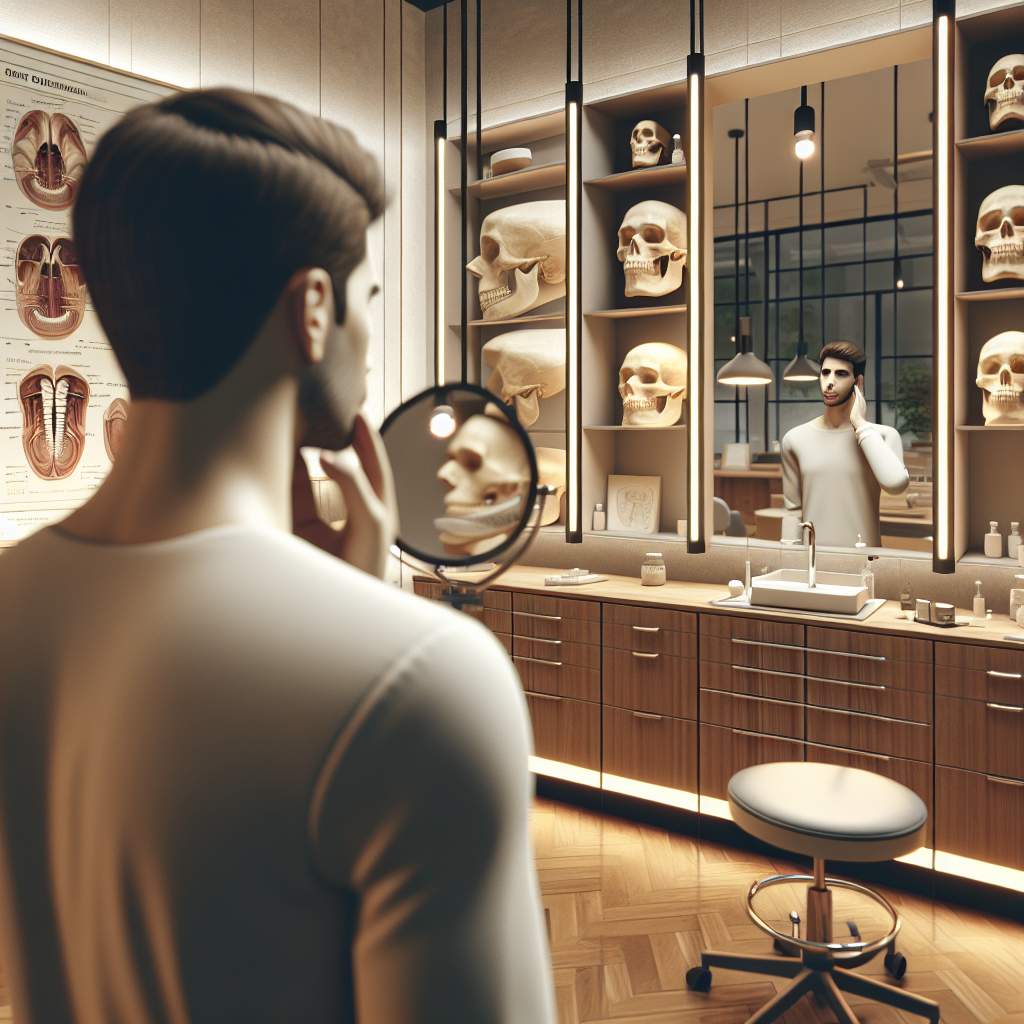What are the psychological effects of seeing mewing results?
Seeing mewing results can greatly boost a person’s confidence and satisfaction. When individuals notice visible changes in their facial structure, they often feel happier and more self-assured. This positive shift in appearance can lead to improved mental health, as people feel better about how they look.

How does mewing impact self-esteem and confidence?
Mewing, a technique that involves positioning the tongue against the roof of the mouth to potentially improve facial structure, has been said to boost self-esteem and confidence in some individuals. People who practice mewing often hope to enhance their jawline or achieve a more defined facial appearance.
When someone sees positive changes in their appearance, it can make them feel better about themselves. This boost in how they view themselves can lead to increased confidence in social situations and a more positive outlook on life. Feeling good about one’s appearance is closely linked to overall self-esteem.
What are the common psychological benefits reported by individuals practicing mewing?
Individuals who practice mewing frequently report several psychological benefits beyond just an improved physical appearance. Many mention feeling more confident in their daily interactions, which can lead to better relationships and even opportunities in both personal and professional spheres.
Additionally, the discipline required for consistent mewing practice can foster a sense of accomplishment and control over one’s well-being. This sense of achievement can contribute positively to one’s mental health, reducing feelings of anxiety or depression related to concerns over appearance.
Can mewing lead to an obsession with facial appearance?
While mewing has its benefits, there is a potential downside. Some individuals may become overly focused on achieving the perfect facial structure, leading to an unhealthy obsession with their appearance. This fixation can detract from other important aspects of life and well-being.
The constant comparison of one’s facial features before and after practicing mewing might also contribute to increased dissatisfaction if results do not meet expectations. It’s important for those practicing mewing to maintain realistic expectations and understand that changes can be subtle and take time.
How does the perception of attractiveness change after mewing?
The perception of attractiveness after practicing mewing can vary greatly among individuals. For some, minor adjustments in jawline definition or facial symmetry resulting from consistent practice may significantly enhance how attractive they feel and are perceived by others.
This change in perceived attractiveness can influence personal satisfaction with one’s appearance and potentially how others interact with them socially. However, it’s crucial to note that beauty standards are subjective, and true attractiveness encompasses much more than just physical traits.
| Visible Change | Confidence/Satisfaction Aspect | Typical Timeframe for Noticeable Change |
|---|---|---|
| Weight Loss/Gain | Improved body image, self-esteem | 3-6 months |
| Muscle Building | Increased strength perception, body positivity | 4-8 weeks |
| Skin Improvement (Acne, etc.) | Better social confidence, reduced anxiety | 4-12 weeks |
| Hair Growth/Recovery | Enhanced self-image, happiness with appearance | 2-6 months |
| Dental Corrections (Braces, Whitening) | Increase in smiling, social engagement | Immediate to 1-2 years for braces; days to weeks for whitening |
| Tattoo or Scar Cover-up/Removal | Personal empowerment, closure on past experiences | Varies widely; immediate to several months/years |
Are there any negative psychological effects associated with mewing?
Mewing, while beneficial for some, can also have negative psychological effects. One common issue is the development of an unhealthy obsession with one’s facial structure. People may spend excessive time analyzing their faces, leading to increased stress and anxiety.
Additionally, if individuals do not see immediate results, they may experience feelings of frustration and low self-esteem. This disappointment can be particularly challenging for those who had high expectations for transformation through mewing.
After achieving noticeable results from mewing, many individuals report a positive shift in their social interactions. This change is often attributed to the boost in confidence and self-esteem that comes from improved facial aesthetics. People tend to become more outgoing and willing to engage in conversations.
However, it’s important to note that reactions can vary. While some may receive compliments and positive attention, others might face questions or skepticism about their changed appearance. These mixed reactions can influence how someone perceives their social experiences post-mewing.
What role does patience play in the psychological journey of mewing?
Patience is a critical component of the psychological journey of mewing. Since changes can be slow and subtle, maintaining a patient mindset helps individuals stay committed to the practice without succumbing to frustration or disappointment.
Lack of patience can lead to premature cessation of the technique or even resorting to more drastic measures for facial enhancement. Therefore, understanding and accepting the gradual nature of mewing’s effects are essential for a positive mental outlook throughout the process.
Final Thoughts
Mewing has the potential to offer both physical and psychological benefits; however, it’s crucial to approach it with realistic expectations and a healthy mindset. The journey involves patience, persistence, and a balanced perspective on self-improvement.
Ultimately, while mewing can contribute positively to one’s self-image and social life, it should be seen as one part of a broader commitment to personal well-being rather than a quick fix for deeper issues related to self-esteem or attractiveness.







